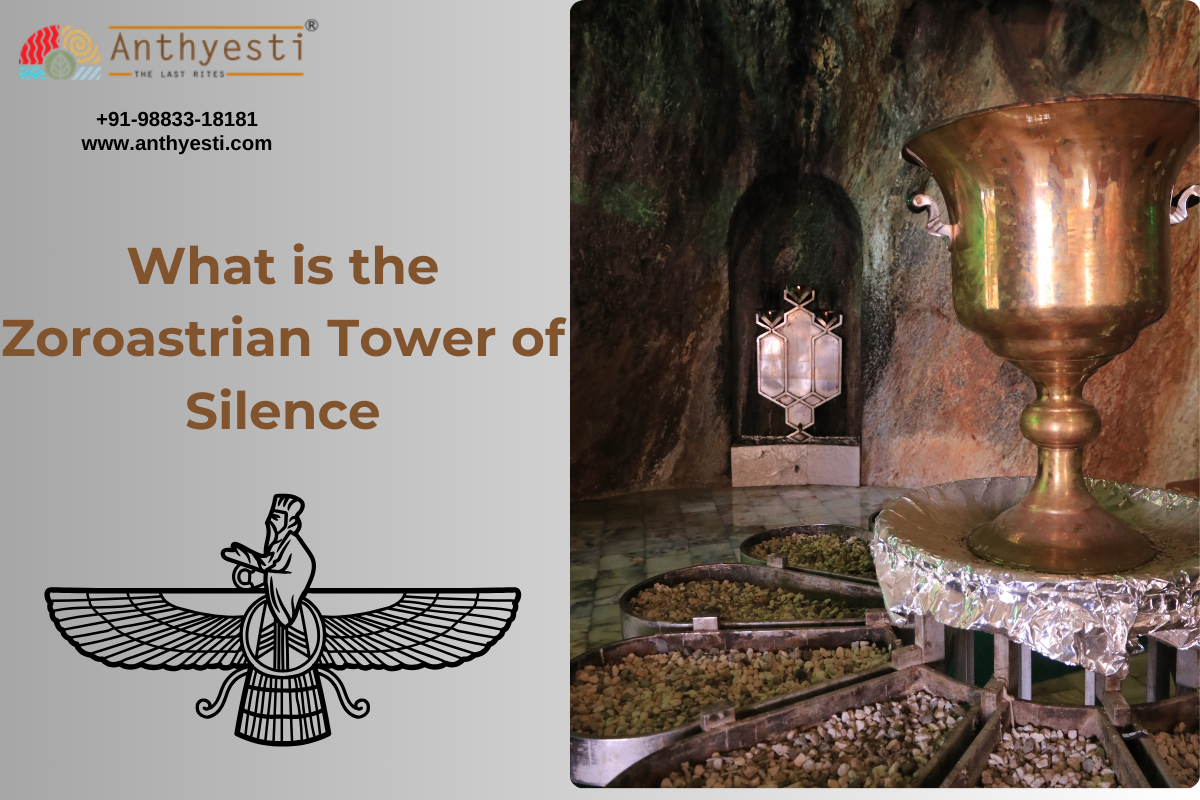
What is the Zoroastrian Tower of Silence
The zoroastrain tower of silence faith rises out of the complex web of world civilizations with a tapestry full of fascinating rites and age-old knowledge. The mysterious Tower of Silence is at the center of its funeral customs. This architectural marvel, an emblem of history and reverence, offers a moving backdrop for the Anthyesti, which in Zoroastrianism represents the last journey of departed souls.
Studying the meaning of the zoroastrain tower of silence reveals a profound respect for life, death, and the passage between worlds as we set out to understand the wide range of funeral customs that exist throughout civilizations. Come with us on this fascinating journey as we explore the lasting significance of this holy structure in the anthyesti Funeral service and the mystery surrounding it.
Acceptance of the zoroastrain tower of silence:
The zoroastrain tower of silence is characterized by its circular, raised platform situated at the top of a hill or elevated terrain. Constructed with concentric rings, the Tower of Silence houses the deceased in the innermost circle, with additional rings for subsequent burials. Its most open-air design differs from cremation or burial customs found in other cultures.
Importance in the zoroastrain tower of silence Thoughts:
Fundamental to the zoroastrain tower of silence is a deep respect for chastity and the sacredness of elements such as fire, earth, and water. The Tower of Silence embodies these ideas, allowing natural elements and scavenger birds, particularly vultures, to purify human remains. Zoroastrians believe that this practice, also known as aerial excarnation or sky burial, safeguards the soul from defilement by fire, water, or earth while aiding its journey to the hereafter.
Symbolism in Spirituality:
Within Zoroastrian mythology, the zoroastrain tower of silence has a profound spiritual significance that goes beyond its practical use. The Tower symbolizes the connection between life and death, with its raised platform acting as a bridge between the material and spiritual realms. Vultures’ presence underscores Zoroastrian beliefs in interconnectedness and the cycle of existence.
Preservation of Cultural Heritage:
zoroastrain tower of silence is sacred to Zoroastrians, who hold it in high regard as custodians of a millennium-old heritage. However, urbanization and changing natural conditions pose significant challenges to the preservation of these sacred spaces. It is essential to take action to preserve and protect these ancient locations, not only for the sake of historical significance but also to ensure that Zoroastrian funeral Service practices remain intact for future generations.
Conclusion:
The zoroastrain tower of silence is evidence of the enduring legacy of ancient customs and religious beliefs. Its central place in the anthyesti funeral service reflects a profound respect for the life-death-transcendence cycle. We dig into the complex web of Zoroastrian culture by examining its meaning and revealing ageless knowledge for those who aim to make sense of life’s mysteries.
FAQ’s
1: What is the Tower of Silence in Zoroastrianism?
The Zoroastrian Tower of Silence, also known as dakhma or dakhmeh, situates a raised circular platform on a hill or other elevated spot. In Zoroastrian burial rites, this holy building is where they dispose of the deceased.
2: What is the purpose of the Tower of Silence in Zoroastrian burial rites?
The Tower of Silence functions as a site for sky burial or aerial excarnation, where Zoroastrians place the bodies of the deceased on the platform to expose them to the elements and scavenger birds, primarily vultures. Believers hold that this process purifies the mortal remains and aids the soul’s journey to the afterlife.
Call us at +91-98833-18181
All Categories
- Ambulance (6)
- Anthyesti Biopic Cinema (11)
- Blogs (330)
- Condolences (8)
- Cremation Center (10)
- Cremation Service (58)
- Dead Body Carrier (20)
- Dead Body Freezer Box (49)
- Dead Body Transport (132)
- dead body van (3)
- Death Ceremony (8)
- FAQ (18)
- Freezer box (20)
- Funeral Communities (10)
- Funeral Service (53)
- General (5)
- hearse van service (48)
- Last Rites Pujas (2)
- Last Rites Rituals (10)
- Media Mentions (9)
- Pind Daan (1)
- Pitru Paksha (3)
- Pre Planning Funeral (11)
- Priest Funeral Service (1)
- Shraadh Rituals (3)
- Uncategorized (3)
- Vaikunta Samaradhane rituals (1)
- We are in News (19)





